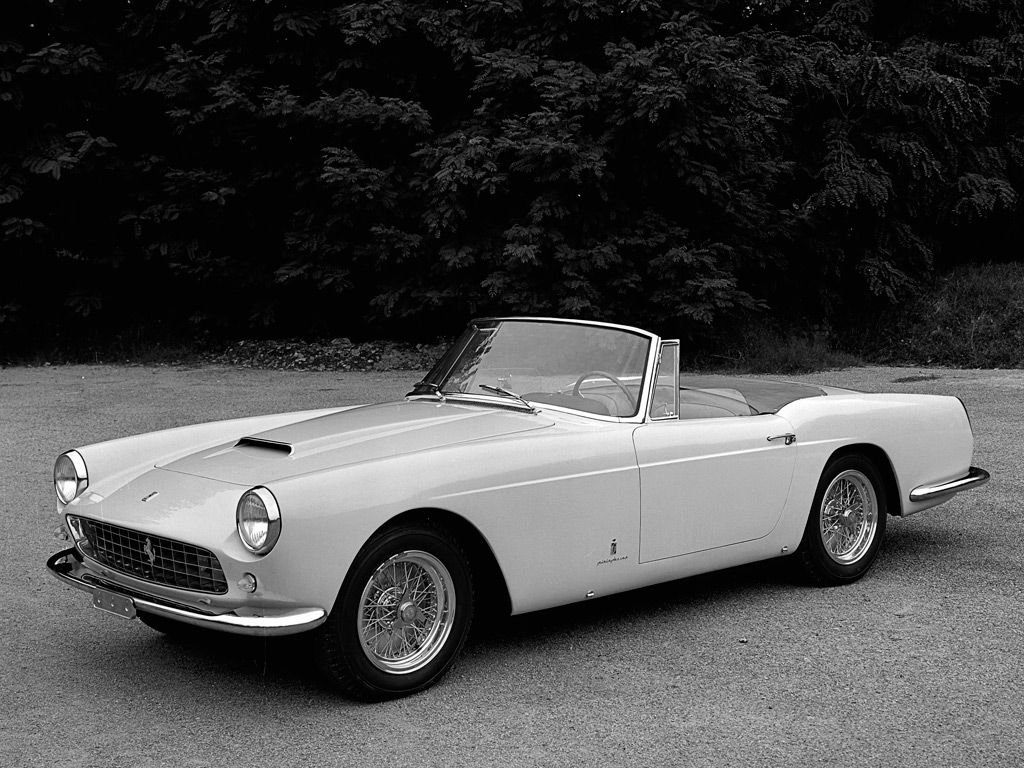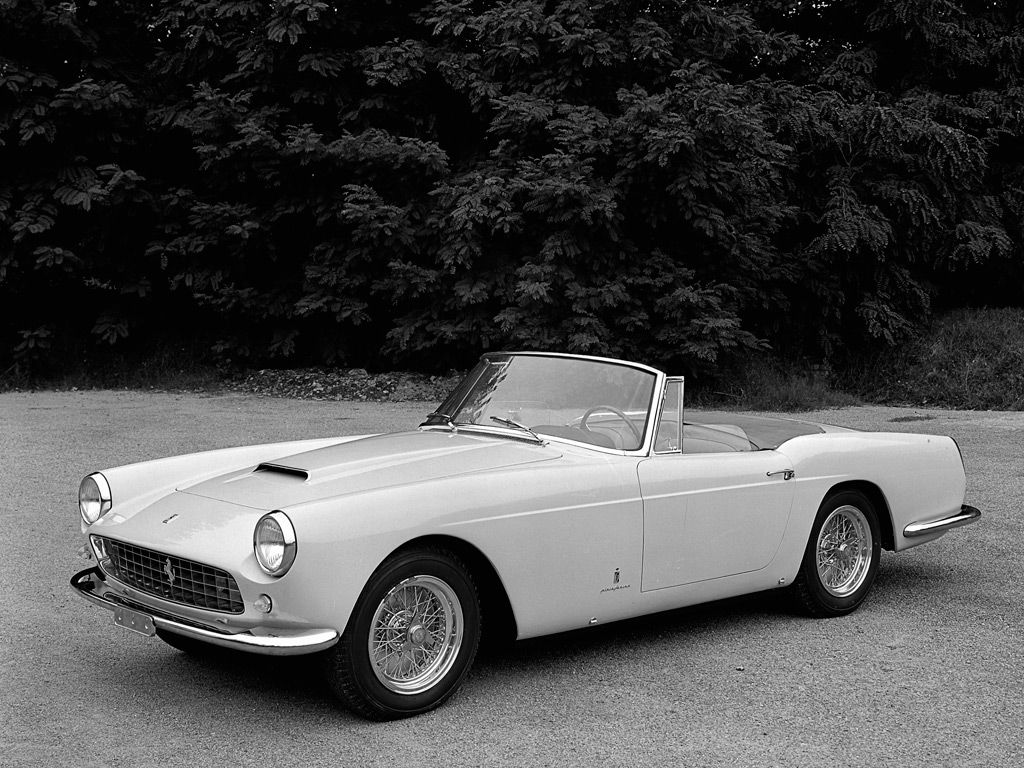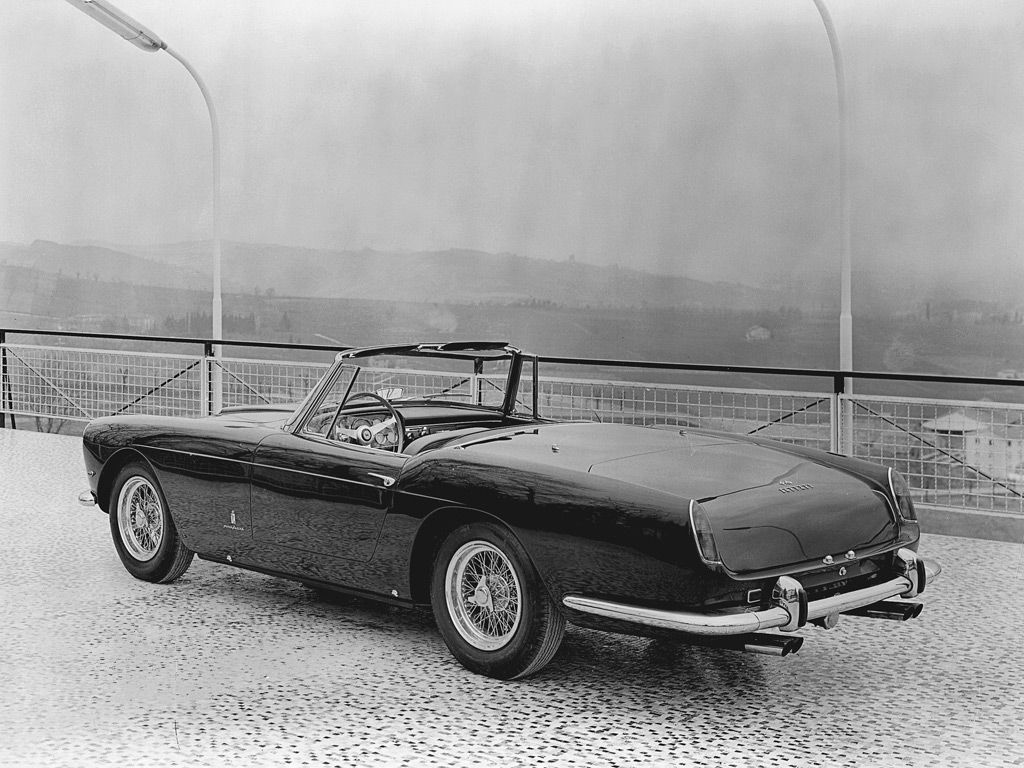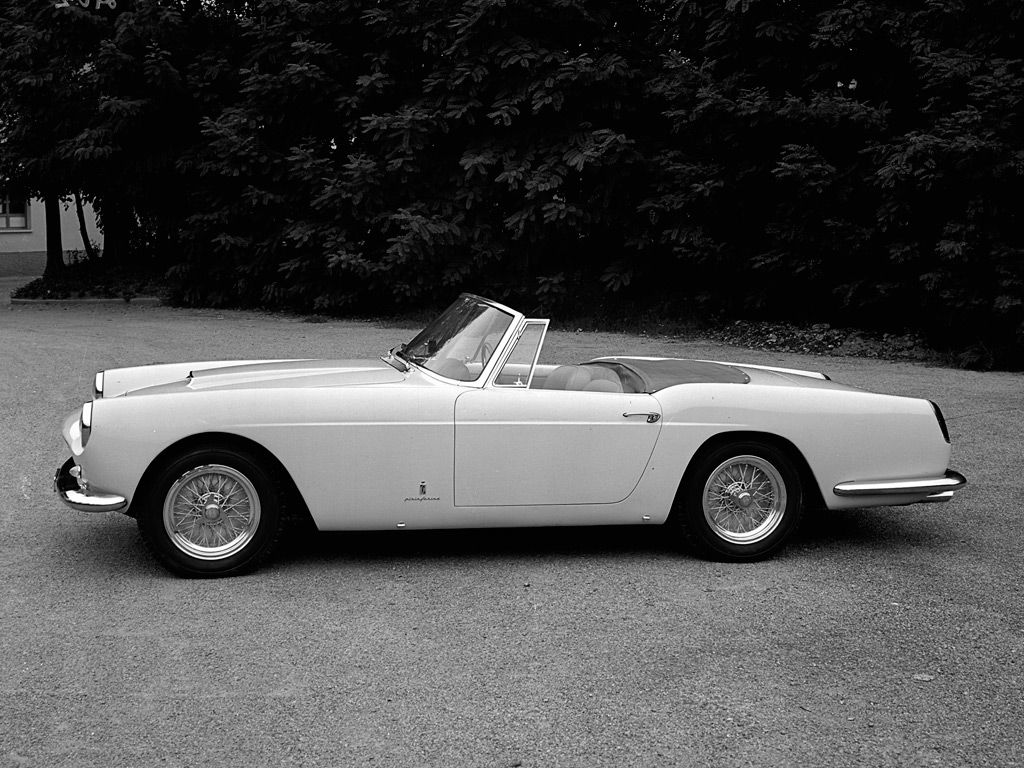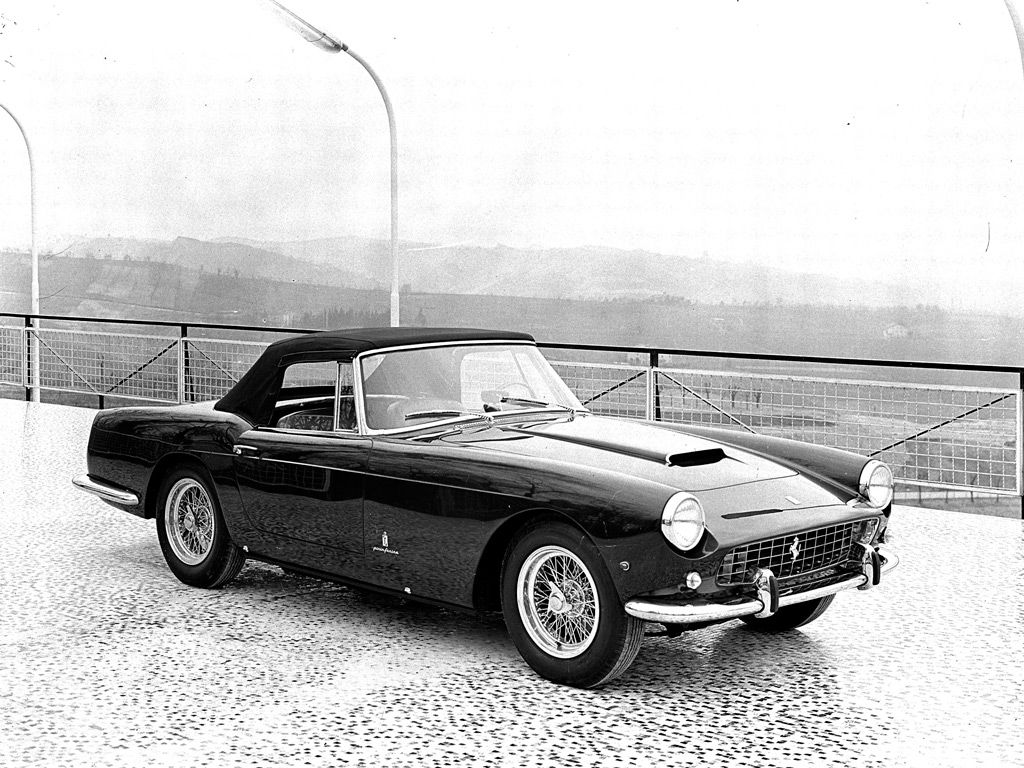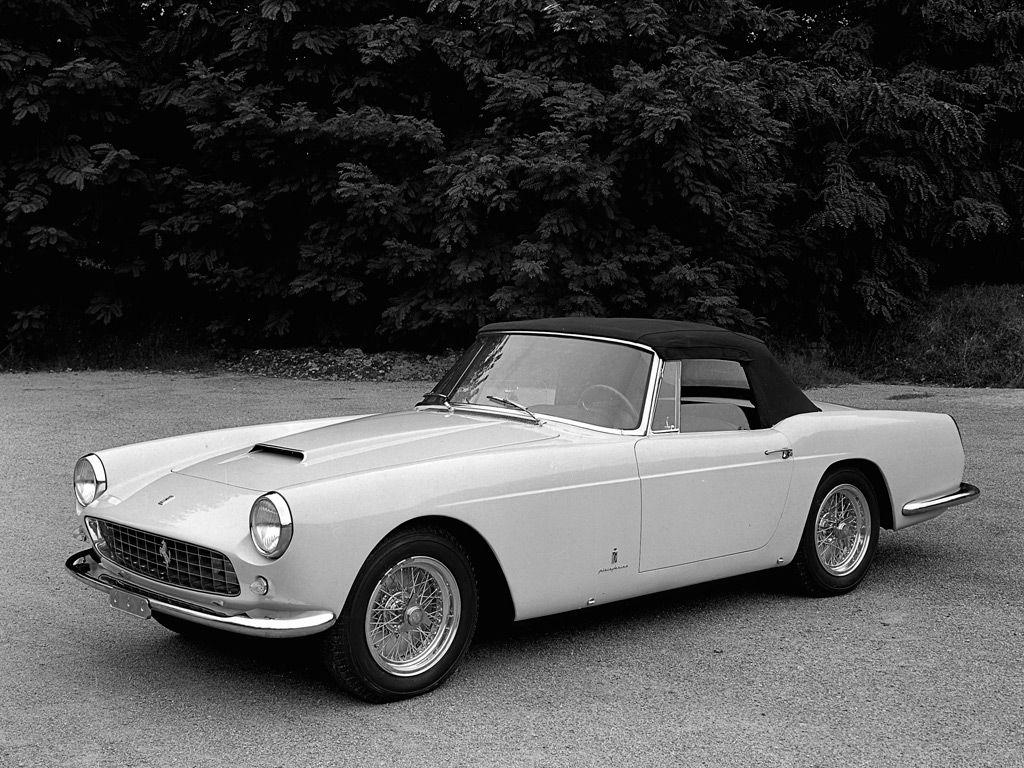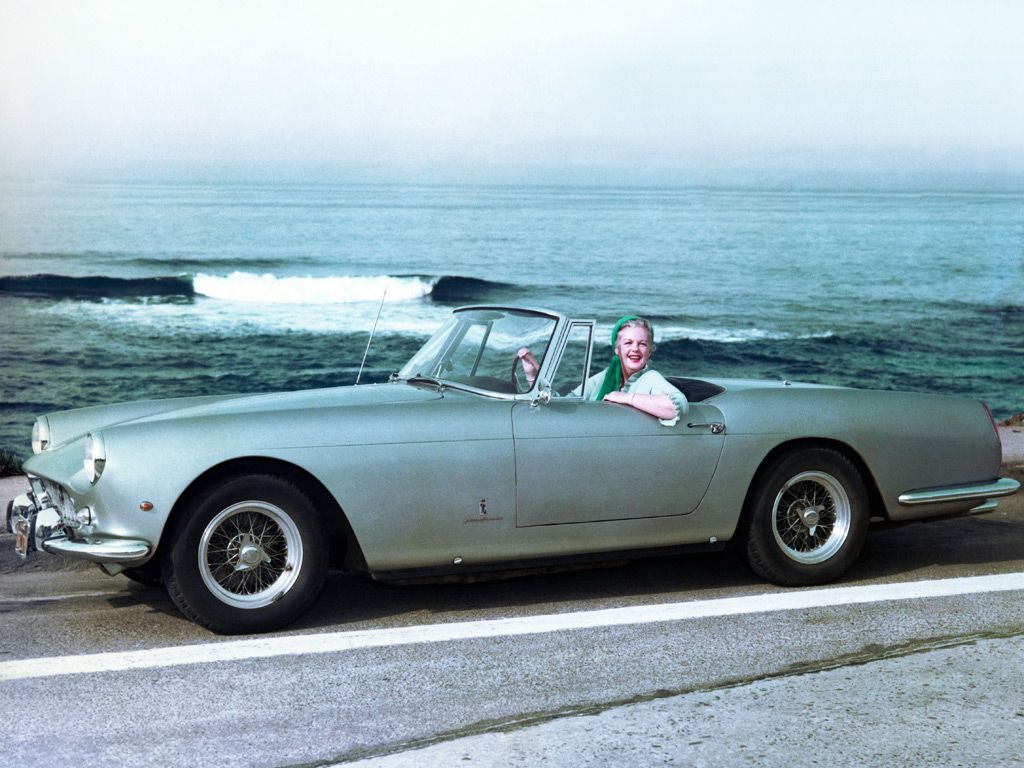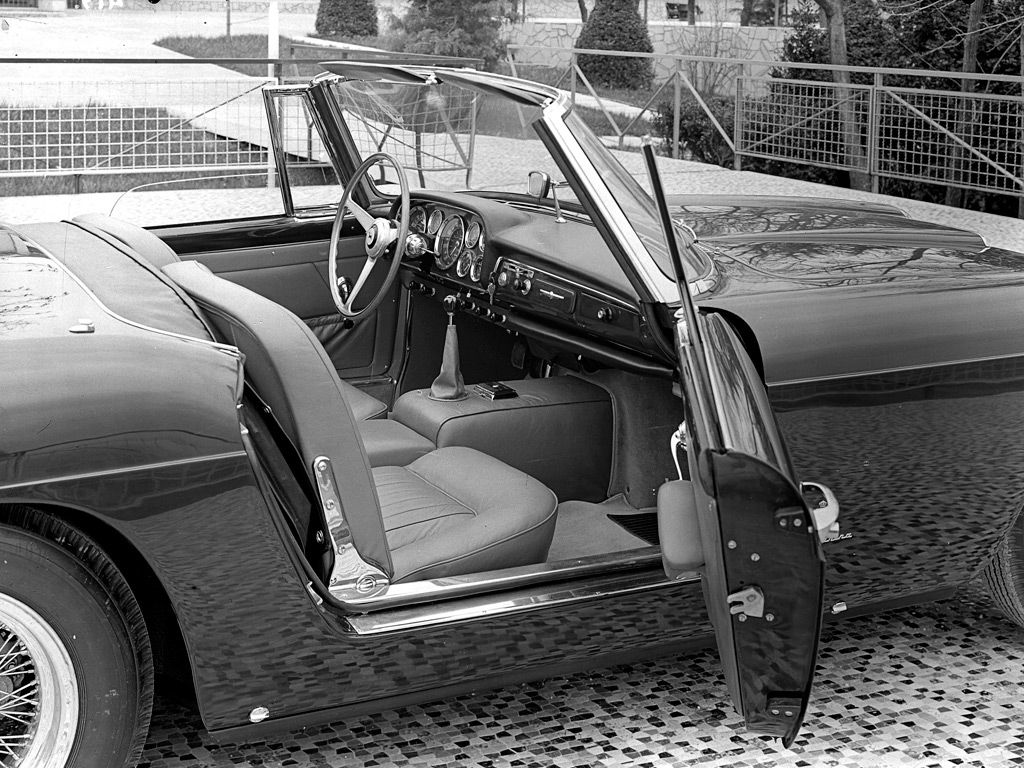In 1957 at the Geneva Motor Show, Ferrari unveiled the 250 GT Cabriolet - a two-seater spider built for the more refined clientele. After the first 40 cars had been produced, a second series was created. To differentiate it from the more sporting 250 GT Spider California, the Cabriolet's styling was made more sober, boot space was increased and it was made more comfortable inside. Production continued until 1962, and around 200 cars were built in all, with no two cars were completely identical.
Of course is not the first spider-bodied Ferrari, but until it cabriolets featuring proper folding soft tops had only been produced in relatively small numbers. So, in 1956 when Carrozzeria Boano exhibited a 250 GT Cabriolet, chassis 0461GT, it was the beginning of a new era. This was in fact the first 250 GT Cabriolet that lead to the first series of Pininfarina-designed cabriolets produced during 1957 and 1958.
Like most of the previous models, the 250 GT Cabriolet was built on a 2600 mm wheelbase and they were powered by a 3-litre version of the Colombo 'short-block' V12 engine that delivered 240 hp.
1957 Ferrari 250 GT Cabriolet
- Make: Array
- Model: 1957 Ferrari 250 GT Cabriolet
- [do not use] Vehicle Model: Array
The model generally featured covered headlights in the wing extremities, although some later examples had open headlights due to a change in Italian lighting legislation, with vertical rubber-faced bumperettes below them, flanking the wide and low shallow oval egg-crate grille.
The front wing line flowed through the door, with a curve up to the lightly finned rear wing line, which terminated with a triangular, flush mounting tail light in the top trailing edge. The Pininfarina move towards uniformity continued with these cabriolets, although as with the coupés produced around the same time, individual cars were personalized for particular clients.
At the 1958 Paris Salon the model was exhibited in a mildly modified form, in that the vertical front bumperettes had been replaced by a full-width chrome-plated bumper that ran below the grille. The bodies were constructed and trimmed by Pininfarina, before shipment to Ferrari for fitment of the mechanical components. A total of forty examples were built including the prototypes, all but two of which were left-hand drive.

